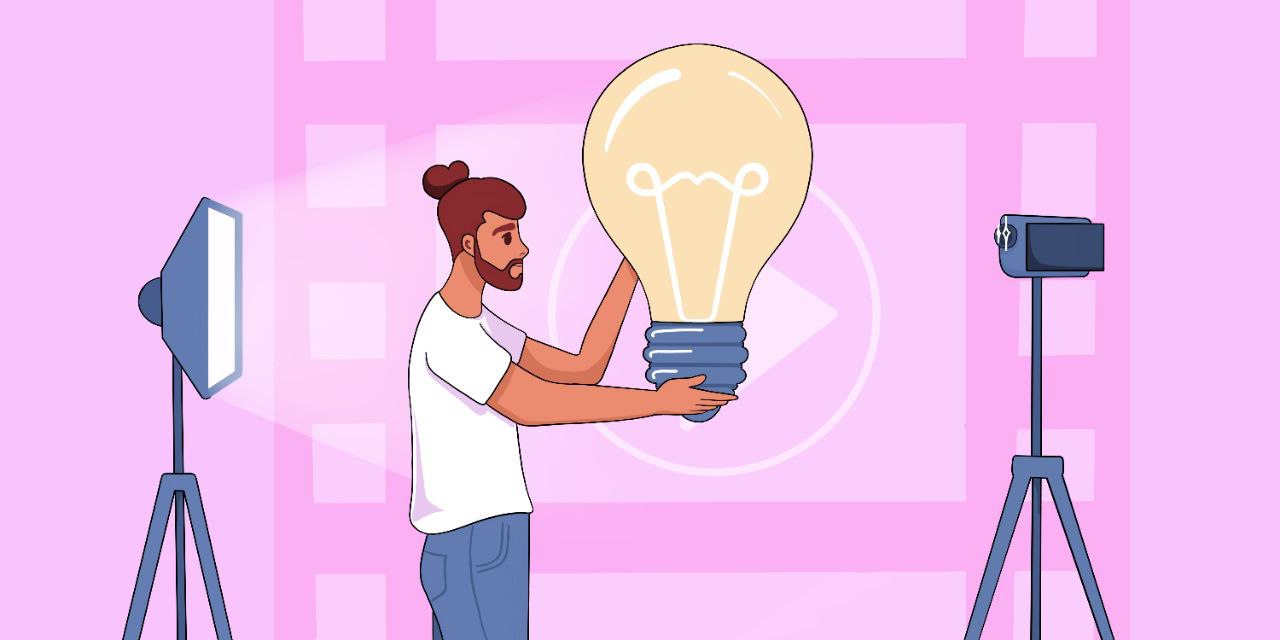How to Create a Perfect Video For Youtube

Do you want a simple answer to the question in the title? Unfortunately, there isn’t one. Understand this - there is no such thing as a perfect video. Even a video with the cutest kitten on the planet won't please everyone.
So, remember the first rule: don't expect that your content will be liked by everyone in the world. It's better to concern yourself with something more realistic. Ask yourself the following; what do I need to do in order to create a video that viewers will actually watch.
Why do some videos gain massive attention while others struggle for views?
No one will give you a straightforward and universal answer to this question. There are a vast number of reasons why your videos might not attract viewers, and many of them can be rather contradictory:
- The topic is unpopular/popular.
- The video is boring/overloaded with too much content.
- You upload videos too infrequently/too frequently.
- Low video quality/poor presentation by the host.
- The plot is too simple/too complex.
- Narrowly optimized metadata/too general video description.
Listing the reasons can go on endlessly, as you may now understand. That's precisely why there's no such thing as the "perfect" video, and there's no point in searching for this unicorn out there in the wild. Some people enjoy a complicated woven plot, as seen in Christopher Nolan's movies, while others delight in straightforward comedies in the style of "Step Brothers" where you don't have to strain your brain over the plot.
Both can be successful content because each has a clear concept, form, and topic that appeals to a specific audience. The concept of your video is the foundation for its success, and without it, you won't get anywhere.
Now, let's pause and ask ourselves the following: isn't the concept, form, and topic of a video all the same? Not quite. The items previously mentioned represent three distinct elements, each serving a unique function in the development of your video.
Topic, form and video concept
Let's break down what the topic, form, and concept of a video actually means and then we can dive into how to use each for your success.
Topic - it's what your video is about.
Think back to literature lessons in school. That's where we first became acquainted with these terms. So, the topic of a work, in our case, a YouTube video, is the answer to the question, "What is this work about?" Since we're not in a school class, the answer often resides in our subconscious and is quite straightforward: about travels, about movies, about cars. For instance, a video about crocheting a hat. That would be the video's theme, but to categorize it, we need to engage in some light segmentation.
The video, like the whole channel, falls into the craft and handmade niche. But imagine that the video is not just about crocheting but about crocheting in a specific way - with a crochet hook. Then we'll further define it - crocheting a piece of clothing, like a hat.
There's no profound thought here or even an answer to why people would watch this video. This question will be answered shortly. For now, it's crucial to establish the connection between the channel and the video's topic and detail it.
By the way, these developments can later be confidently used when creating the video's title, description, and tags because the video's topic is always related to some search queries or keywords.
Form - it's how your video will look.
Returning to literature lessons, when we talk about form, we immediately think of poetic form. Therefore, it's the language and visual aspects we'll use to present our topic.
Perhaps it will be a video in the style of a talking head, where the creator speaks to the camera about their affairs. Or maybe it's a faceless video in the form of a music clip, just a montage of consecutive shots set to music. Or it could be some entrancing slow asmr video, where you crochet in a beautiful setting with soft muted lighting and a focus on the sounds being made.
It's also important not to forget that storytelling can take the form of a cinematic narrative, with actors and sets, or it can be in a documentary style, where you work with sources and interview relevant individuals.
All of this is about the form of your video.
But answers to questions like why we're creating this, who it's for, and why are still missing. That's because we get the answers during the video’s concept development phase.
Concept - it's the thought the creator wants to convey in their video.
Finally, we've reached the most important and complex part. It's the concept that answers the most critical questions about your content:
- What the creator wanted to convey
- The purpose of this video
- Why the creator made this video
- Who this video is intended for
- What problem the creator is addressing with this video
Also pay attention to these 2 points:
- Many questions are focused on human factors related to the creator and their viewers.
- Expressing the idea of a video is significantly more complex compared to the topic and form, as it involves understanding the creator's intentions, the target audience, and the problem the video aims to solve.
Most creators excel at determining the topic and form of their content, but when it comes to why and for whom they're creating it, things get complex. This is why YouTube is full of similar videos that aren't necessarily bad but fail to capture viewers' interest.
The absence of a concept in a video or channel dooms the content to obscurity. People won't want to watch videos without a clear purpose or central idea.
You might argue that people watch all sorts of random content, and yes, they do gain views. While it’s true that anomalies exist on YouTube, just like in the real world. They are not the norm. However it's still essential to understand that people have different tastes and preferences.
What seems like nonsense to you might be fascinating to someone else.
Trends on YouTube include challenges, trash reviews, pranks, shows, and gaming content. Viewers aged 13 to 20, with strong emotions and feelings enjoy content that provides a rush of adrenaline and intense emotions. This age group craves emotional content because it resonates with their heightened emotional states.
Think back to your teenage years: every crush feels like a Shakespearean drama, and every disagreement with your parents seems like a cataclysmic event. These viewers need content that stirs their emotions, and it doesn't necessarily require a well-defined idea. The goal is to evoke an emotion in the audience.
Viral content often includes compilations of funny animals or strange and unusual moments. Let's be honest; most of us have watched something like this occasionally because people need positivity and relaxation in their fast-paced lives. While the content creator might not put much thought into the idea of their video, it does still exist. The idea is to entertain the viewer and bring joy and laughter to their life.
Creating high-quality humor content actually requires significant effort because making people laugh isn't as easy as it seems.
How to create video concepts that are engaging
Generating a random idea poses little difficulty. However, formulating a well-conceived idea is an entirely separate endeavor.
Content creators want to work more efficiently and get more views and reactions to their videos. To step up the complexity and achieve the next level of success, you need to answer a crucial question: who is your audience?
Creating a successful video without considering your audience's interests and pain points doesn’t happen often. Even those creators whose videos randomly go viral and become popular are still catering to their audience's interests. They might not consciously analyze this, but it's happening.
Those who don't understand why their video became successful won't be able to replicate it. Therefore, videos might become successful randomly, but if you don't understand where to look and how to find the secret of their success, you won't be able to reproduce that success.
The secret to success lies in the ideas that shape your video, which should be based on your audience's interests. To get to know your channel's audience better, turn to channel analytics. Nobody knows your viewers better than the data.
For new channels or creators who haven't started yet but want to prepare thoroughly, analytics might not be available, so you can use the following sources:
- Niche and competitor analytics
- Comments on videos that share your topic of choice
Comments are unquestionably an underutilized resource. While they may necessitate significant time and effort to sift through, they offer a treasure trove of untapped questions and insights. Amidst the many remarks beneath other creators’ videos, one can easily discover questions that have yet to be considered. These questions not only merit answers, but also present an opportunity to meet the needs of viewers eagerly awaiting guidance.
However, the "virality" of a video doesn't depend solely on its topic, concept, or format, but also on how well you execute your concept.
Consider this: if Mr. Beast's videos were shot with a bad camera, minimal editing, no script, or a poorly thought-out approach to filming, there wouldn't be much to watch. It's unlikely he would have become the figure he is today.
If you remove the special effects or the acting from James Cameron's "Avatar," all that remains is a story resembling "Pocahontas," nothing more.
Don't worry if you generate too many ideas. Create as many as possible, so you can choose and implement the most interesting and relevant ones in the future. Dedicate time and let your imagination run wild. Don't hesitate to tackle something strange or unrealistic if you believe it might be intriguing.
An ideal video might not exist, but a good one certainly does!




